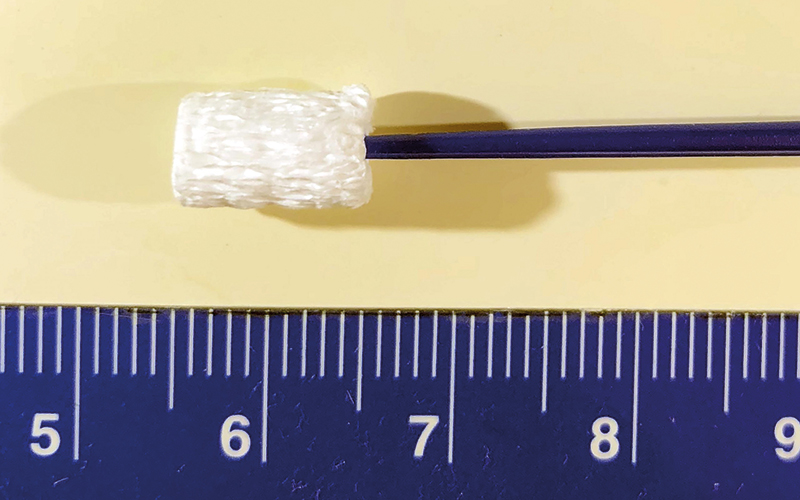Ultra-absorptive nanofibre swabs could reduce the number of false-negative tests by improving sample collection and test sensitivity, it is claimed.

Currently, the most sensitive test for COVID-19 involves using a long swab to collect a specimen from deep inside a patient’s nose, then RT-PCR to detect SARS-CoV-2 RNA.
But if the viral load is low, the swab might not pick up enough virus to be detectable.
A team of researchers wanted to develop a nanofibre swab that could absorb and then release more viruses and other biological specimens, improving the sensitivity of diagnostic tests.
They used an electrospinning technique to make 1cm-long cylinders composed of aligned nanofibre layers, which they coated with a thin layer of gelatin and bonded to plastic swab sticks.
In lab tests, the porous nanofibre cylinders absorbed and released more proteins, cells, bacteria, DNA and viruses from liquids and surfaces than the cotton or flocked swabs commonly used for COVID-19 testing.
The team made dilutions of SARS-CoV-2 virus, swabbed the liquid samples and tested for viral RNA with RT-PCR.
Compared with the two other types of swabs, the nanofibre ones reduced the false-negative rate and detected SARS-CoV-2 at a 10-times lower concentration.
In addition to allowing more accurate and sensitive COVID-19 testing, the nanofibre swabs have far-reaching potential in diagnosing other diseases, testing for foodborne illnesses and helping forensic teams identify crime suspects from miniscule biological specimens, the researchers say.




